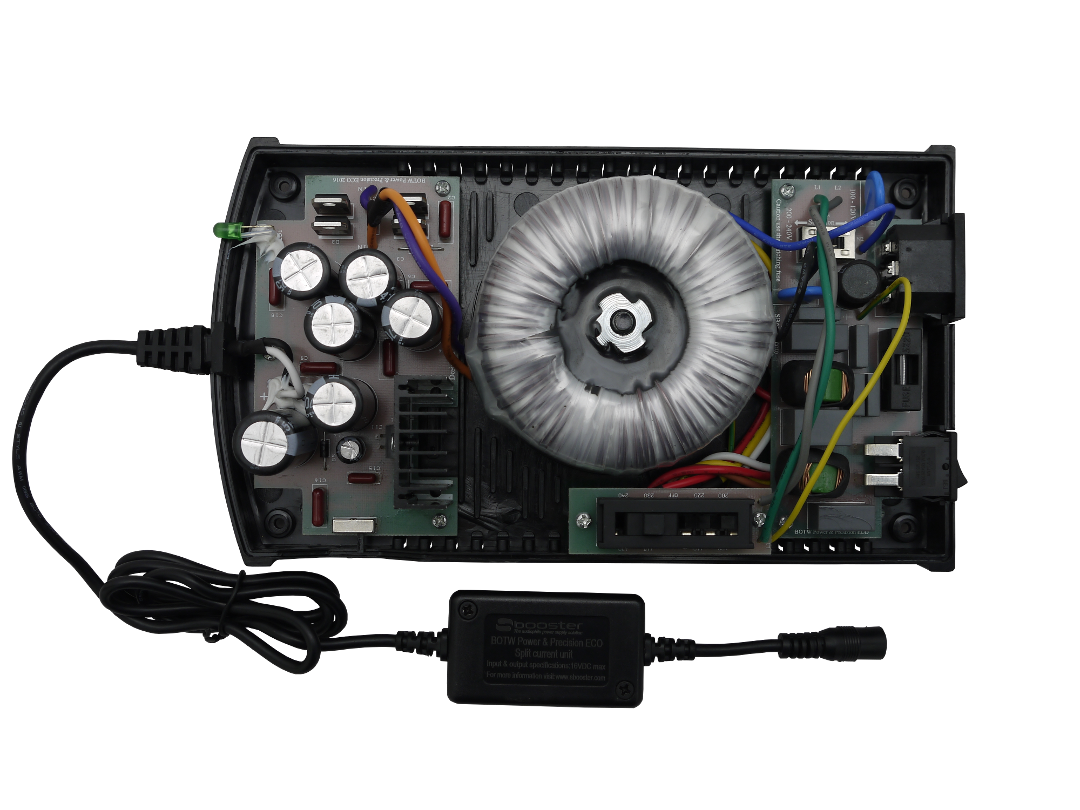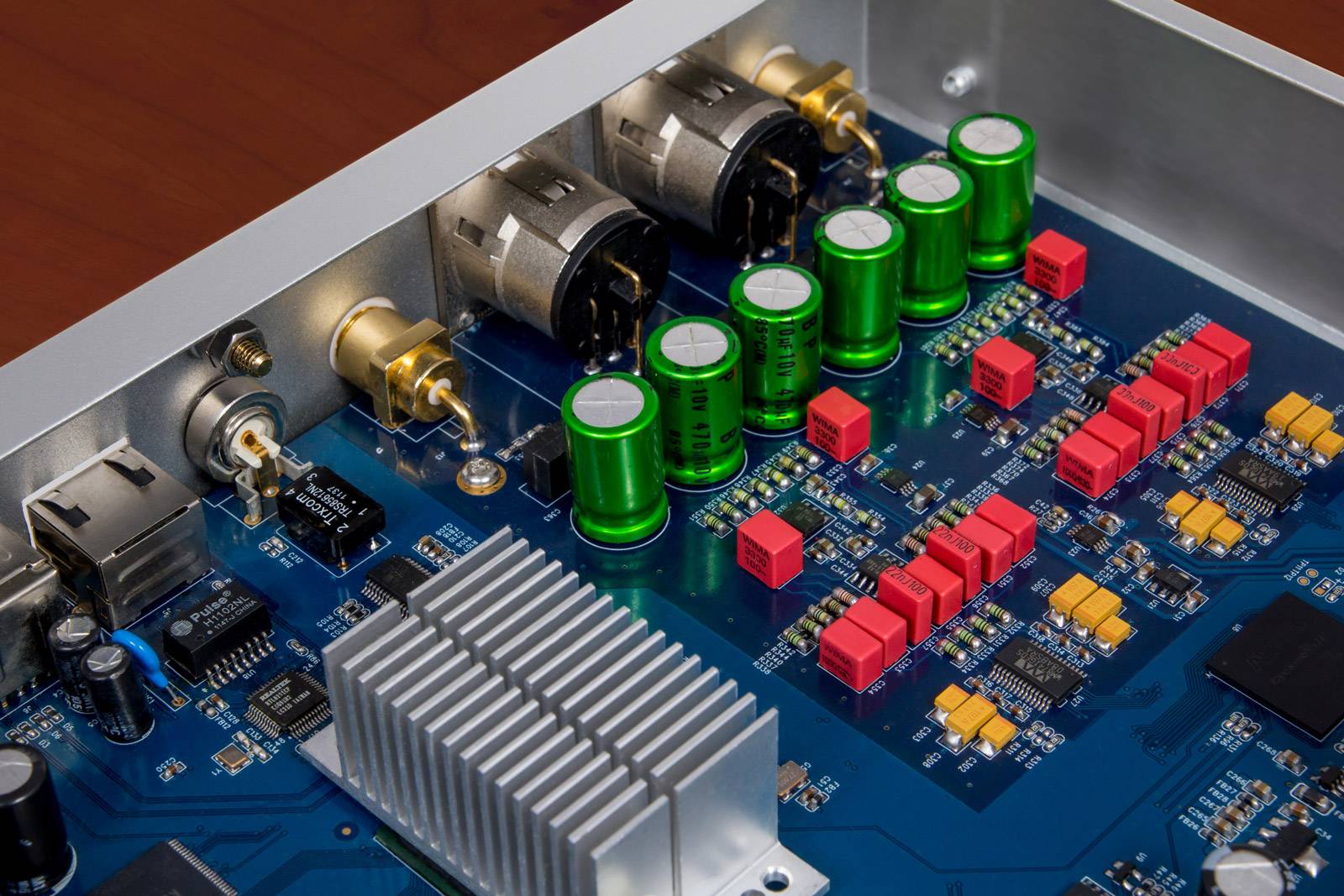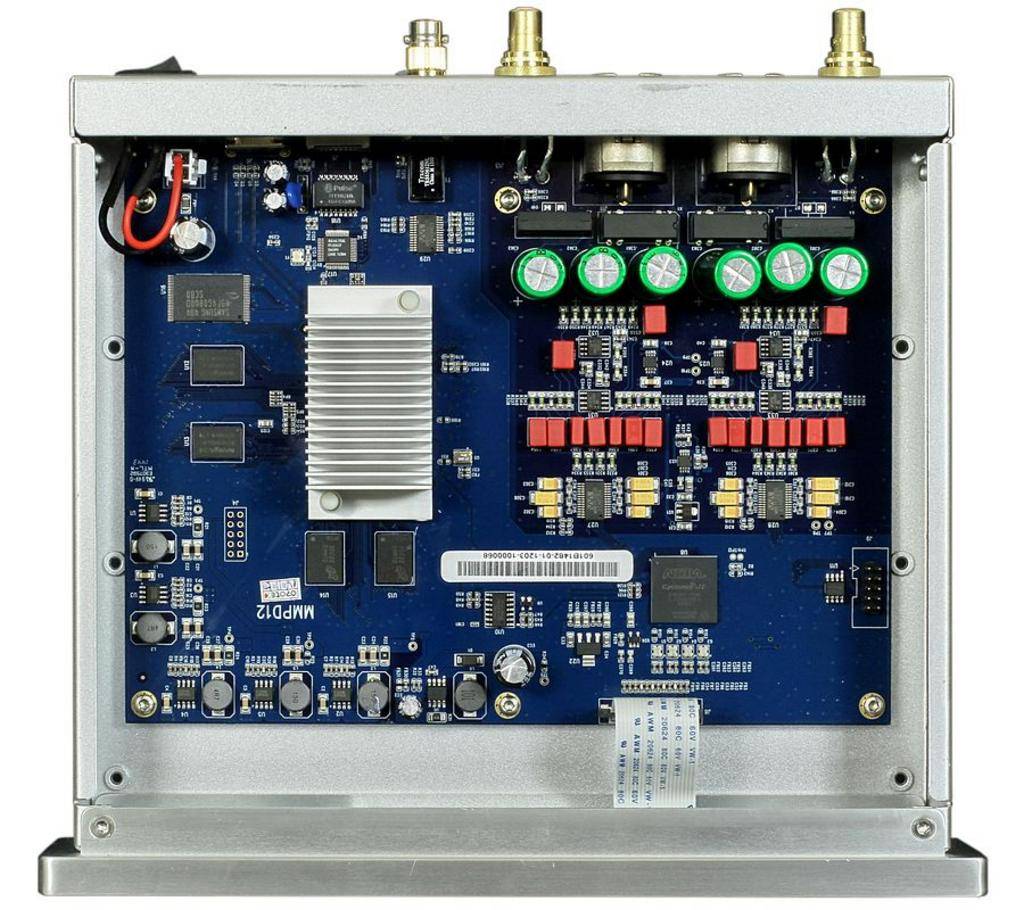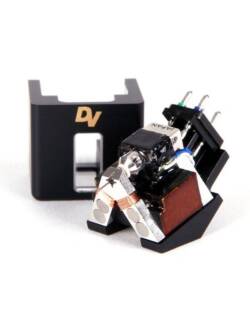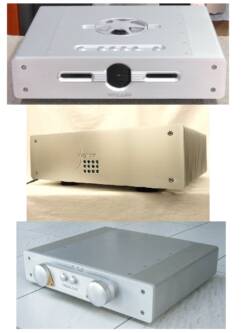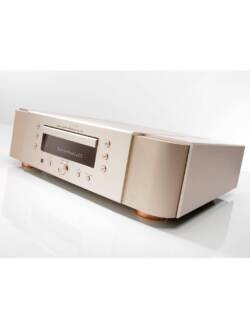Lumin D1 DAC/Streamer
Original price was: R68,000.00.R22,000.00Current price is: R22,000.00.
Specification
D1 Specification
-
DSD Support:
- DSD 2.8MHz, 1-bit
-
PCM Support:
- Up to 384kHz, 16–32-bit, Stereo
-
Analog Output Stage:
- Wolfson WM8741 DAC chips, 1 chip per channel
- Fully balanced layout with high-quality components
-
Digital Output Stage:
-
BNC SPDIF:
- PCM 44.1kHz–192kHz, 16–24-bit
- DSD (DoP, DSD over PCM) 2.8MHz, 1-bit
-
-
Power Supply:
- External 100–240V AC auto-ranging
-
Physical:
-
Finish:
- Raw brushed aluminium
-
Dimensions:
- 240mm (W), 244mm (D), 60mm (H), 2kg
-
-
Streaming Protocol:
- UPnP AV protocol with audio streaming extension (OpenHome)
- Roon Ready
- Spotify Connect
- Plāys with Audirvāna
- AirPlay-compatible
- QPlay-compatible for QQMusic
- Gapless Playback
- On-Device Playlist
-
App Features:
- Native support for TIDAL, MQA, Qobuz and TuneIn Radio.
- Tidal MAX and MQA icons to identify high-res music
- Qobuz high-res icons to identify high-res music
- Volume control
- High-resolution artwork
- Artwork caching
- Search
- Multiple tag handling
- Composer tag support
- Album-grouping in playlist
- Automatic internet links to artists/album/songs
- Saving and restoring of playlists (including Tidal and Qobuz)
-
Supported Audio File Formats:
- DSD Lossless: DSF (DSD), DIFF (DSD), DoP (DSD)
- PCM Lossless: FLAC, Apple Lossless (ALAC), WAV, AIFF
- Compressed (lossy) Audio: MP3
- MQA
-
Input:
- Ethernet RJ45 network 100Base-T
- USB storage, flash drive, USB hard disk (Single-partition FAT32, exFAT and NTFS only)
-
Analogue Audio Outputs:
- XLR balanced, 4Vrms, pin 2 Hot (6Vrms on X1)
- RCA unbalanced, 2Vrms (3Vrms on X1)
-
Supported Control Devices:
- Apple devices. iOS 11.0 or later (List of supported devices)
- Android devices. Android 4.0 (Ice Cream Sandwich) or later required
- Apple Silicon. macOS 11 or later. (Download the iOS App from the iOS App Store)
- Chromebook. Google Play Store required.
-
Other:
- Leedh Processing lossless digital volume control
- Programme of Continuous Development – Firmware-upgradable for further features and enhancements
Description
Lumin D1
The name Lumin should be familiar for audiophiles and music lovers. While the company started its business not so long ago (the first product was launched in 2012), it quickly gained the worldwide brand recognition. The beginnings of Lumin were controversial because the first streamer was very similar to another product in this category, manufactured by Linn. However, it soon became clear that despite some external similarities, Lumin is a completely different device in terms of sound and its possibilities. From the very beginning Lumin’s streamer had the ability to play DSD files and music from USB drives connected directly to it. These options weren’t offered by the competition.
Then the product line has been expanded by several new devices. The first streamer – A1 is still in production. Then the top S1 model joined in. The next one was T1, which is almost identical to the A1 but in a cheaper, simpler housing, and D1 – the subject of this review – which is for the moment the cheapest item in the Lumin’s catalogue. In addition, Lumin company offers a magazine for music files (in other words NAS) that matches the design of other devices.

Design and functionality
Lumin D1 is a compact device. With a width of more or less half the standard audio device and with a similar depth, it can be easily set in every audio system. The housing is made of aluminium, and the front is a thick slab of the same metal. The only element of the front panel’s decoration is placed at its center – a blue dot-matrix display and a small logo. The rear panel of D1 is definitely more interesting. We can find unbalanced analogue RCA outputs with very solid, gold-plated sockets, XLR balanced outputs, SPDIF digital output in BNC form – those who want to use the digital output will need a special cable or adapter for RCA. Application of BNC connectors indicates a serious approach from the designers team, because the standard BNC connector allows the device to keep a proper impedance at sockets and plugs, and as a result the whole SPDIF track, which is almost impossible in the case of the RCA plugs. In addition to the connectors mentioned before, we also find a RJ-45 Ethernet connection and two USB Type A sockets for pendrives or USB drives and a power socket with a switch. A typical, laptop-style power supply is included, which – in the case of an audio device – is not the optimal solution. But by using only one supply voltage (12 V) we can easily replace it with the product of a company specializing in power supplies, like for example Teddy Pardo.
The whole functionality is controlled by the Lumin iPad application. And this is my biggest complaint to the company – if you don’t have an Apple device, it won’t be possible to set some parameters of the device, because alternative software doesn’t provide this functionality. Fortunately, once you set up the Lumin, you don’t need to do it every day again. Controlling the playlists is possible with alternative software – here I recommend Kinsky (created by Linn), available for PC and Android. As I mentioned in the introduction, Lumin supports PCM 384 kHz/32 bit and DSD64 1 bit/2,8 MHz files. Because it’s a streamer, or a network player, a NAS device will be needed. The manufacturer recommends several options that allow an installation of UPNP MinimServer with the option of DSD file transfer. It’s worth paying attention to it during the configuration of the network, because the most of commercially available solutions are limited to PCM files. Lumin is not only a streamer – after connecting the USB drive, it can share and use the resources, so it becomes both a NAS and a streamer. Two in one. To complete the picture, I just have to mention that I used the D1 for several weeks and it has never hung up or stopped playing – it all worked seamlessly.

Sound performance
I could describe the sound performance of Lumin D1 in one sentence – it sounds like the Lumin A1. But certainly not every reader knows the older device, so I will try to describe it in greater detail. Once I said that the first Lumin, is the most analogue-sounding digital audio source I have ever heard. This statement is also true for the D1. In anticipation of possible questions, this is not about any lack of clarity or slowing down, but a certain kind of performance associated with a good set for vinyl records. Sound has a high resolution, with a great, wide and deep soundstage, a very good PRAT, and at the same time great density. Now I will say something that might upset all fans of high definition files – Lumin plays CD-quality files so well that you really don’t need to seek ephemeris like DSF and DFF files or 24/192 PCM files. Of course, this may not be true in every case, because sometimes the hi-res files are prepared from another master, and therefore the sound is different, often subjectively better.
During the test of D1 I listened to very different music, so I was able to hear a large part of my ‘filebrary’. So I’ll start from the genre which is closest to me – rock. There were no lapses here. Is it quiet rolling of Camel, or the virtuosity of electric guitar performed by John Mayer, Jeff Beck and Slash – all sounds were played just in time. Guitars were clearly legible, and they had adequate brightness and saturation. Their contours were perhaps slightly blurry (it’s one of the points where the A1 model shows its superiority), but it didn’t interfere with enjoying the music. It is equally essential that the other musicians and their instruments were as important in creating a sound events as leaders. Is it bassists, drummers and keyboard players – each of these instruments were clearly heard, everyone was faithfully shown and placed on a stage in their proper location.
Jazz recordings only confirmed previous observations. Small jazz bands sounded sensational. Natural voices, musicians well-placed on the stage, plenty of space between them. Each recording became so addictive that I didn’t want to stop listening, every album played from beginning to end, sometimes even several times in a row. Interestingly, despite the slight thickening of the contours of the instruments, they didn’t lose their distinctive elements. Miles Davis’ trumpet was as sharp as it should be, while Cannonball Adderley saxophone was smooth as velvet.
All the vocals were a bit highlighted, which gave them only sensuality. Even voices usually quite difficult to reproduce, such as Asaf Avidan, Jon Anderson, Bruce Springsteen singing falsetto, sounded extremely engrossing. But not only men’s voices got an extra portion of sensuality. There was some “Lumin Touch” in the sound – everything was consistent that it sticked me to the speakers for hours. I cann’t omit electronic music, especially this – let’s call it classic – from the old days where analogue synthesizers dominated. Jarre, Vangelis, Detlef Keller – due to the consistency and sound temperature of Lumin, they were all exceptional. Synthetic soundscapes drew like in a black hole. It was hard to stop at a single disc. Great foundation of bass, very good rhythm only increased the pleasure of listening. I’m not a fan of classical music, but with the help of D1 even this was absorbed smoothly. If I listened to the classics, it would be the harpsichord, although this is a very difficult instrument to reproduce faithfully. Lumin didn’t have the slightest problem with it. If only the instrument and recording are good enough – we have a real feast for the ears.
Sharp-eyed readers may have noticed that I didn’t dissect the music and I didn’t described each part of the bandwidth. The reason is that when you listen to the D1, there is no temptation of decomposing the music. Sound is absorbed as a whole. I think that all audiophiles and music lovers who will listen to this device, also won’t have a need to split the sound into small pieces.

Build quality and technical parameters
The interior of Lumin D1 is a little less equipped than in the A1 – all components were mounted on one circuit board. If we exclude a display board and output transformers, the solutions applied in this model are very similar to those we find in its older brother. Looking from the front left side we can notice the digital section, with the voltage stabilization and the processor hidden under a solid heatsink. On the right we have a FPGA Altera Cyclone IV and extensive analogue section. The heart of the analogue section are two Wolfson WM8741 D/A converters, one for each channel. Analogue circuit is fully balanced and passive components were selected very carefully.
System configuration
Asus Eeebox PC (Win 8.1 + Foobar2000 + MinimServer), Monster Cable 250DCX, Vovox Vocalis, B&W 804S, Linn Unidisk 1.1, Hegel HD20, iFi Audio iDAC Micro, Stello U3, Manley Shrimp, Linn Akurate A2200, Linn Silver, Linn Black, Mogami Pure Resolution, Ultralink Audiophile Mk II, Gigawatt PF-2, Gigawatt PF-1, Enerr Holograph Hybrid, Gigawatt LC-2 mk II, Gigawatt LC-2, Gigawatt LC-1 mk II, Audionova Starpower mk II, Michell Gyro SE, Jelco 750D, Dynavector DV-20X2 L, Lyra Dorian, iFi Audio iPhono Micro, AKG K142HD, AKG K619, Pro-Ject HeadBox.

Verdict
When I started this test, I was a bit afraid that D1 stands to lose in confrontation with the memorable performance of A1. But my fears proved unfounded – D1 presents exactly the same philosophy of sound as the older model. Full, slightly analogue performance with excellent timing and great sound temperature. Comparing D1 to A1 we can find some differences, a resolution would be the first one – phenomenal in A1, just good here. But for the D1’s price, I’m not complaining. I strongly recommend it to all music lovers and to all vinyl fans, because D1 style is very similar to this of a truly analogue source. Only people who like to split the sound into pieces would feel a bit disappointed, but I think the point is to have as much pleasure from listening to music as possible. And Lumin D1 provides this in 100%.




